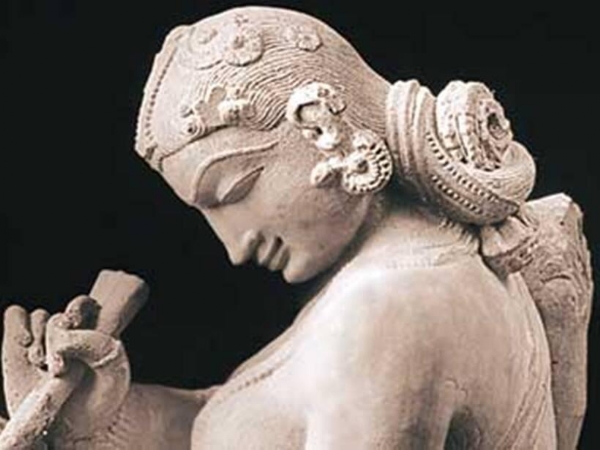Ancient India I: To be or Not to be
24 Apr 2023 16:42:07
हतो वा प्राप्यसि स्वर्गम्, जित्वा वा भोक्ष्यसे महिम्।
तस्मात् उत्तिष्ठ कौन्तेय युद्धाय कृतनिश्चय:॥
On the central line of the Mahabharat War, One chariot stops just seconds before the clarion call of war. That chariot bears the image of a monkey on its banner, it was the chariot of Arjuna, the ‘Purnpurusha’, the greatest warrior the world has ever seen. But, in that one second, On the brink of a great battle between warring branches of the same family, Arjuna is suddenly engulfed with misendeavours of the injustice of killing so many people, some of whom are his friends and relatives, and he lowers his bow and literally sat down in his chariot. On that one illuminating moment, Krishna said this to Arjuna, “If you fight and die, you will be in the heaven as warrior, if you fight and win this war, you will be the emperor of the earth, so Arjuna, son of Kunti, stand up and make decision to fight war with conviction!”

But, you will ask me why suddenly we are discussing Gita and Ancient India. Because from today onwards, we are going to wander into the woods of Ancient India and its different facets.
But before entering into this, we need to ask ourselves- “To be or not To be??”. Because once we enter into it, there is no way back. The tenacity and divinity of Ancient India will change you forever. So, like Arjuna, we need to ask “To be or not to be”.
India is one of the oldest civilizations in the world with a kaleidoscopic variety and rich cultural heritage. India was and is always a land of seekers. Ancient India was a land of culture that believed in the pursuit of knowledge and exploring worlds with the empirical bend of mind.
India, the land which gave ‘zero’ to the world, along with the calculated values of ‘pi’ (π). The land of seekers, India provided world-class Knowledge with the foundation of the oldest universities in the world.
Hygiene and cleanliness are normal habits for every Indian. This habit is deeply rooted in ancient understanding which also gave ‘shampoo’ to the world.
In the modern world, where LGBTQ+ communities are fighting for their rights, ancient India depicted and elaborated gender fluidity through many stories, lessons, and sculptures. The ‘third gender’ was not only in existence in Indian society but these identities were also widely accepted and celebrated.
The land produced the young lad, who then became a monk and showed the illuminating light to thousands of people as ‘Buddha’. The birthplace of Buddhist thought Jain thoughts is still guiding thousands in the whole world with its values as ‘Ahima’ and ‘Manavta’.
The exotica and sensualities are also prominent parts of adult life, this aspect or facet is also honored in this ancient land. The Kama Sutra, the gospel of sensuality, not only teaches us to win the partner in erotic play but also guides us to make every aspect of our life more beautiful and exciting.
From chemistry to metallurgy, India made its own impression in every strand of life. The ‘Ayurved’ gives you an excellent understanding of your own body, energy and soul. Ayurved is the most ancient medical system which takes a holistic view of a person being treated. It is also well known that Sushtruta, a physician from ancient times, conducted many complicated medical procedures like cesareans and other surgeries.
The realm of political thought is incomplete without Chanakya’s ‘arthashastra’. The political system of modern India is a mirror image of ancient Indian political understanding.
In this present century, which is often sketched as the ‘Knowledge Century’, we have everything at the tip of our fingers, and the ‘crisis within’ is increasing on a rapid scale. This crisis leads us to our past, which can be a calming balm or a strong slap on the face which will make us look beyond us.
In this upcoming series, we will discuss Ancient India, its Political, economic, social structure, religion and culture, and many other aspects which will not only inform us about our own heritage and culture but also lead us in the critical situations of our daily life.
So let's join hands and we will go on this wild and exciting journey of understanding our own culture, our own country, and our own Indianness.
